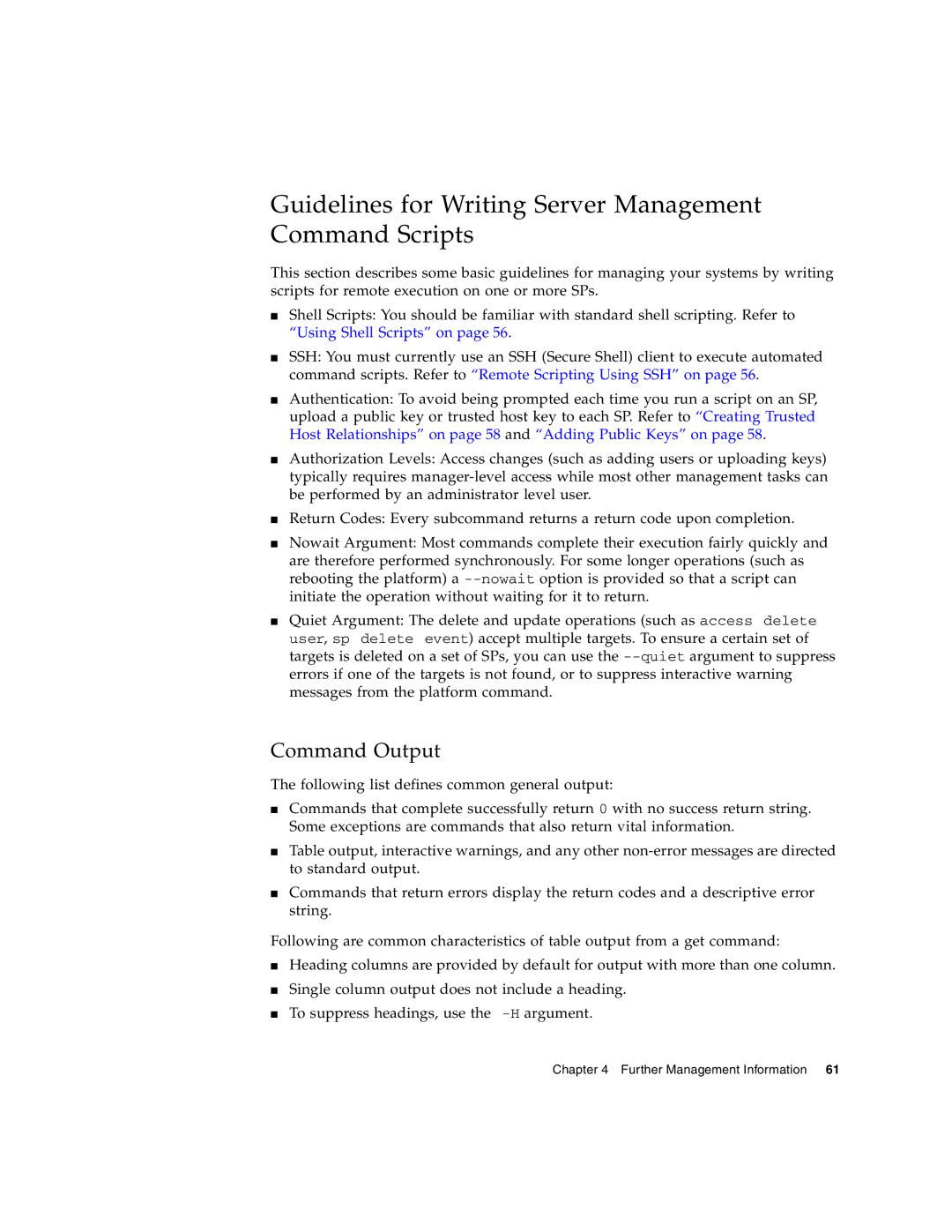Guidelines for Writing Server Management Command Scripts
This section describes some basic guidelines for managing your systems by writing scripts for remote execution on one or more SPs.
■Shell Scripts: You should be familiar with standard shell scripting. Refer to “Using Shell Scripts” on page 56.
■SSH: You must currently use an SSH (Secure Shell) client to execute automated command scripts. Refer to “Remote Scripting Using SSH” on page 56.
■Authentication: To avoid being prompted each time you run a script on an SP, upload a public key or trusted host key to each SP. Refer to “Creating Trusted Host Relationships” on page 58 and “Adding Public Keys” on page 58.
■Authorization Levels: Access changes (such as adding users or uploading keys) typically requires
■Return Codes: Every subcommand returns a return code upon completion.
■Nowait Argument: Most commands complete their execution fairly quickly and are therefore performed synchronously. For some longer operations (such as rebooting the platform) a
■Quiet Argument: The delete and update operations (such as access delete user, sp delete event) accept multiple targets. To ensure a certain set of targets is deleted on a set of SPs, you can use the
Command Output
The following list defines common general output:
■Commands that complete successfully return 0 with no success return string. Some exceptions are commands that also return vital information.
■Table output, interactive warnings, and any other
■Commands that return errors display the return codes and a descriptive error string.
Following are common characteristics of table output from a get command:
■Heading columns are provided by default for output with more than one column.
■Single column output does not include a heading.
■To suppress headings, use the
Chapter 4 Further Management Information 61
